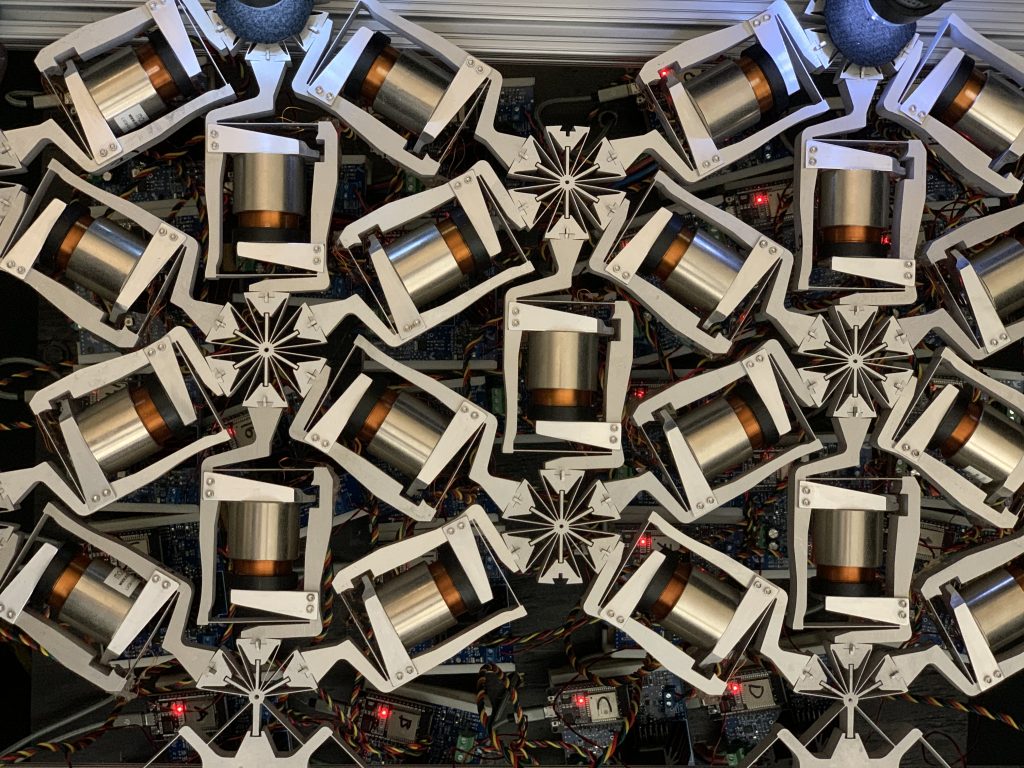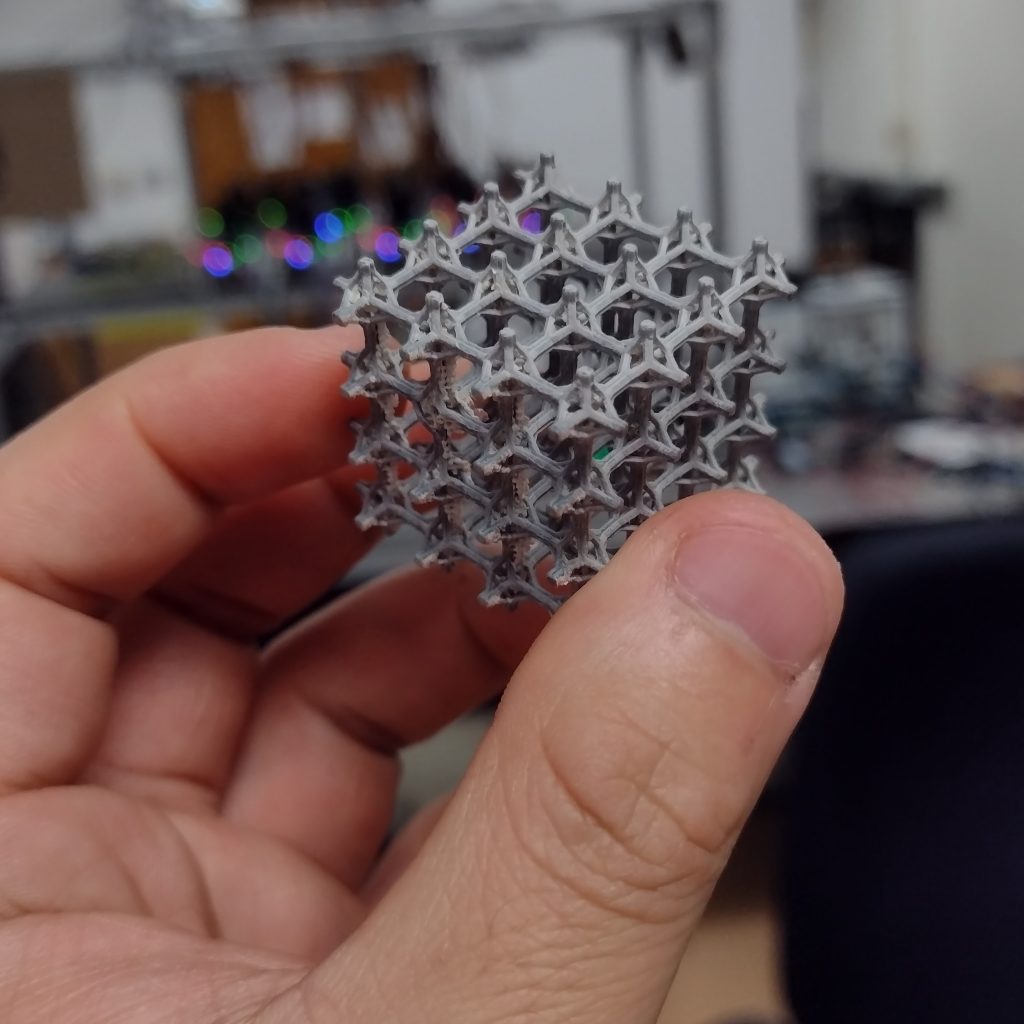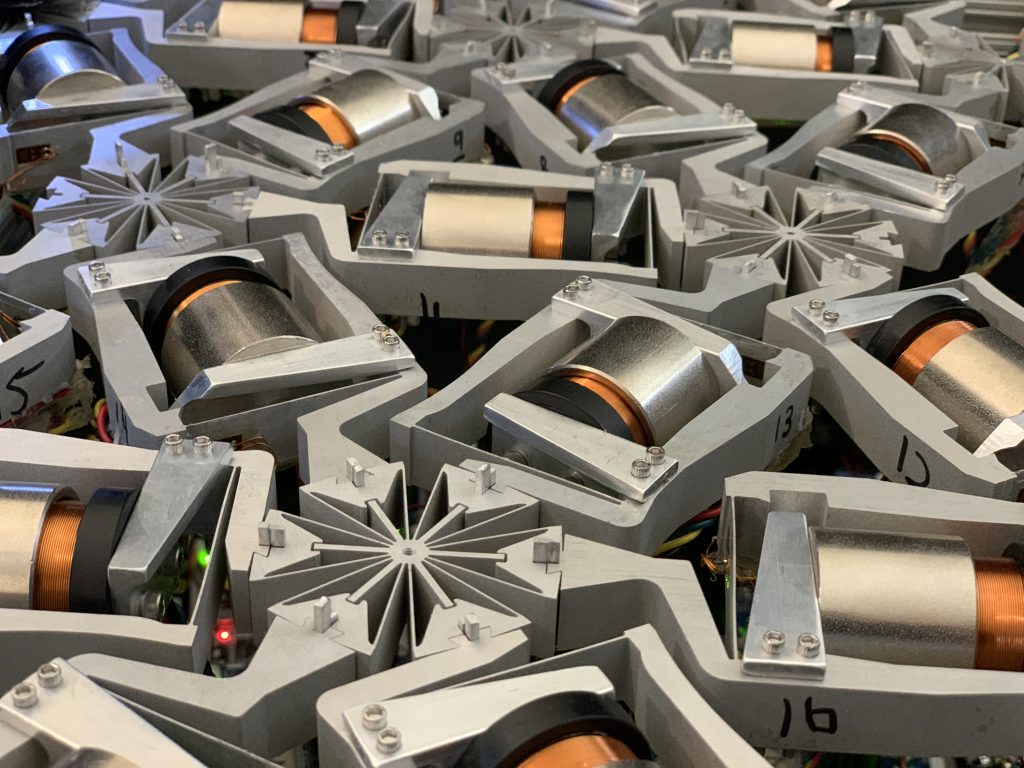[ad_1]

This connection of springs is a model new form of material that will change kind and be taught new properties. Jonathan Hopkins, CC BY-ND
By Ryan H. Lee (PhD Pupil in Mechanical and Aerospace Engineering, Faculty of California, Los Angeles)
A model new form of material may be taught and improve its means to handle stunning forces due to a novel lattice development with connections of variable stiffness, as described in a model new paper by my colleagues and me.

Architected provides – like this 3D lattice – get their properties not from what they’re made out of, nonetheless from their development. Ryan Lee, CC BY-ND
The model new supplies is a type of architected supplies, which can get its properties primarily from the geometry and explicit traits of its design pretty than what it is made out of. Take hook-and-loop materials closures like Velcro, as an illustration. It doesn’t matter whether or not or not it is constituted of cotton, plastic or another substance. As long as one facet is a fabric with stiff hooks and the other facet has fluffy loops, the material can have the sticky properties of Velcro.
My colleagues and I primarily based our new supplies’s construction on that of an artificial neural neighborhood – layers of interconnected nodes that will be taught to do duties by altering how lots significance, or weight, they place on each connection. We hypothesized {{that a}} mechanical lattice with bodily nodes may probably be educated to deal with positive mechanical properties by adjusting each connection’s rigidity.
To look out out if a mechanical lattice would have the flexibility to undertake and hold new properties – like taking on a model new kind or altering directional energy – we started off by developing a computer model. We then chosen a desired kind for the material along with enter forces and had a computer algorithm tune the tensions of the connections so that the enter forces would produce the required kind. We did this teaching on 200 fully totally different lattice constructions and situated {{that a}} triangular lattice was best at reaching all of the shapes we examined.
As quickly because the quite a few connections are tuned to achieve a set of duties, the material will proceed to react throughout the desired means. The teaching is – in a manner – remembered throughout the development of the material itself.
We then constructed a bodily prototype lattice with adjustable electromechanical springs organized in a triangular lattice. The prototype is product of 6-inch connections and is about 2 toes prolonged by 1½ toes giant. And it labored. When the lattice and algorithm labored collectively, the material was able to be taught and alter kind particularly strategies when subjected to fully totally different forces. We title this new supplies a mechanical neural neighborhood.

The prototype is 2D, nonetheless a 3D mannequin of this supplies could have many makes use of. Jonathan Hopkins, CC BY-ND
Why it points
Aside from some dwelling tissues, only some provides may be taught to be larger at dealing with unanticipated plenty. Take into consideration a plane wing that the entire sudden catches a gust of wind and is pressured in an unanticipated route. The wing can’t change its design to be stronger in that route.
The prototype lattice supplies we designed can adapt to altering or unknown circumstances. In a wing, as an illustration, these changes may probably be the buildup of inside damage, changes in how the wing is related to a craft or fluctuating exterior plenty. Every time a wing made out of a mechanical neural neighborhood expert one in all these conditions, it might strengthen and soften its connections to maintain up desired attributes like directional energy. Over time, by way of successive modifications made by the algorithm, the wing adopts and maintains new properties, together with each conduct to the remaining as a type of muscle memory.
One among these supplies could have far reaching functions for the longevity and effectivity of constructed constructions. Not solely could a wing product of a mechanical neural neighborhood supplies be stronger, it might be educated to morph into shapes that maximize gasoline effectivity in response to altering circumstances spherical it.
What’s nonetheless not recognized
To this point, our workforce has labored solely with 2D lattices. Nevertheless using laptop computer modeling, we predict that 3D lattices would have a lots greater functionality for finding out and adaptation. This improve is due to the reality {that a} 3D development could have tens of events further connections, or springs, that don’t intersect with one another. Nonetheless, the mechanisms we utilized in our first model are far too difficult to assist in a giant 3D development.
What’s subsequent
The material my colleagues and I created is a proof of concept and displays the potential of mechanical neural networks. Nevertheless to convey this idea into the precise world would require figuring out tips about methods to make the particular person gadgets smaller and with actual properties of flex and strain.
We hope new evaluation throughout the manufacturing of provides on the micron scale, along with work on new provides with adjustable stiffness, will lead to advances that make extremely efficient good mechanical neural networks with micron-scale elements and dense 3D connections a ubiquitous actuality throughout the near future.
![]()
Ryan Lee has acquired funding from the Air Drive Office of Science Evaluation .
This textual content appeared in The Dialog.
The Dialog
is an unbiased provide of studies and views, sourced from the tutorial and evaluation group and delivered direct to most of the people.

The Dialog
is an unbiased provide of studies and views, sourced from the tutorial and evaluation group and delivered direct to most of the people.
[ad_2]
